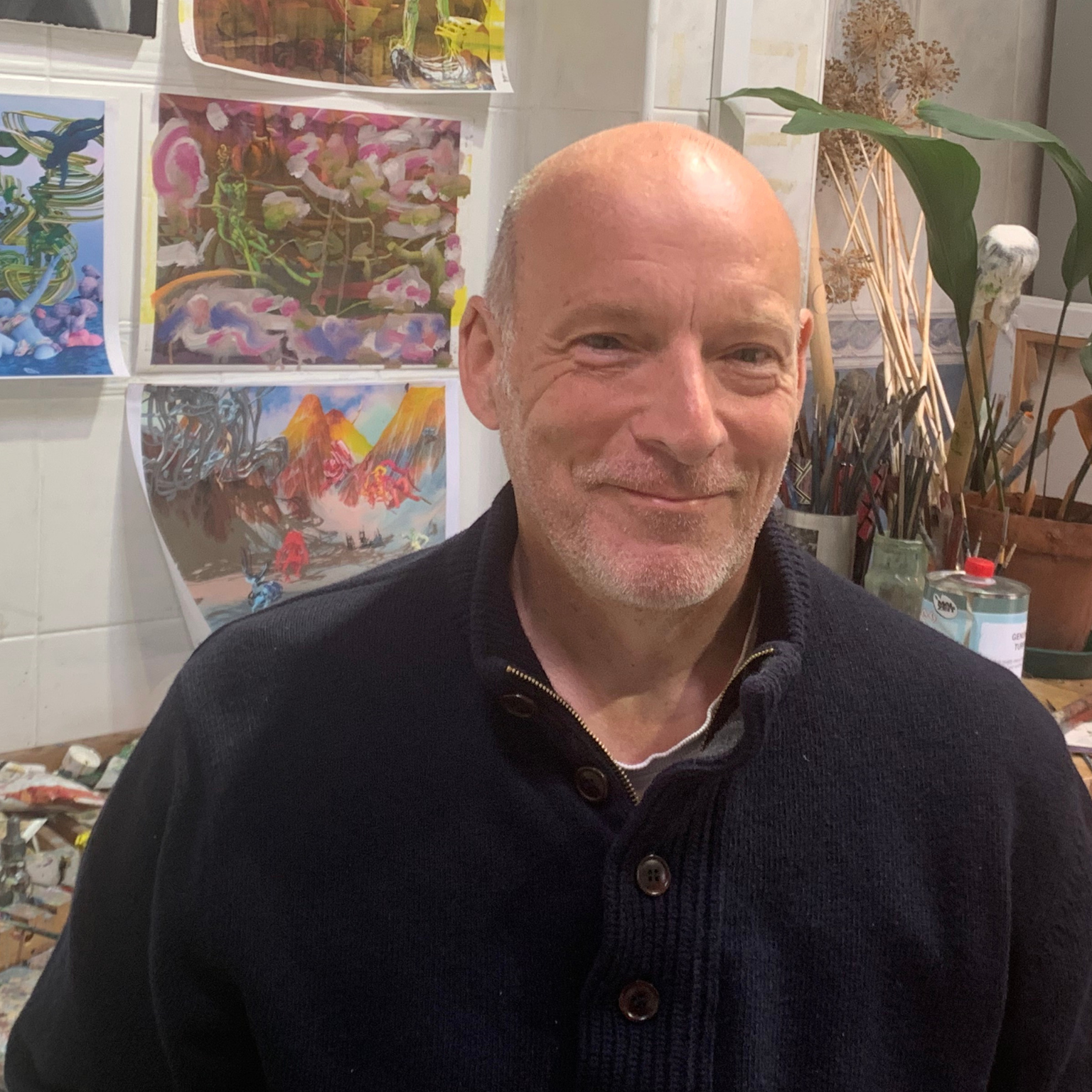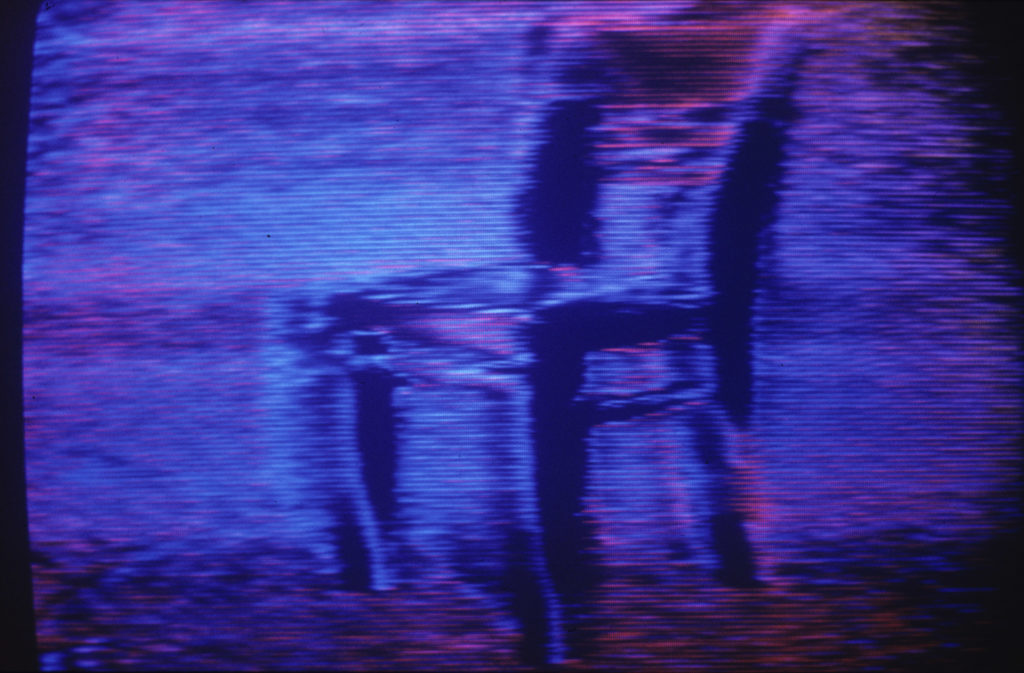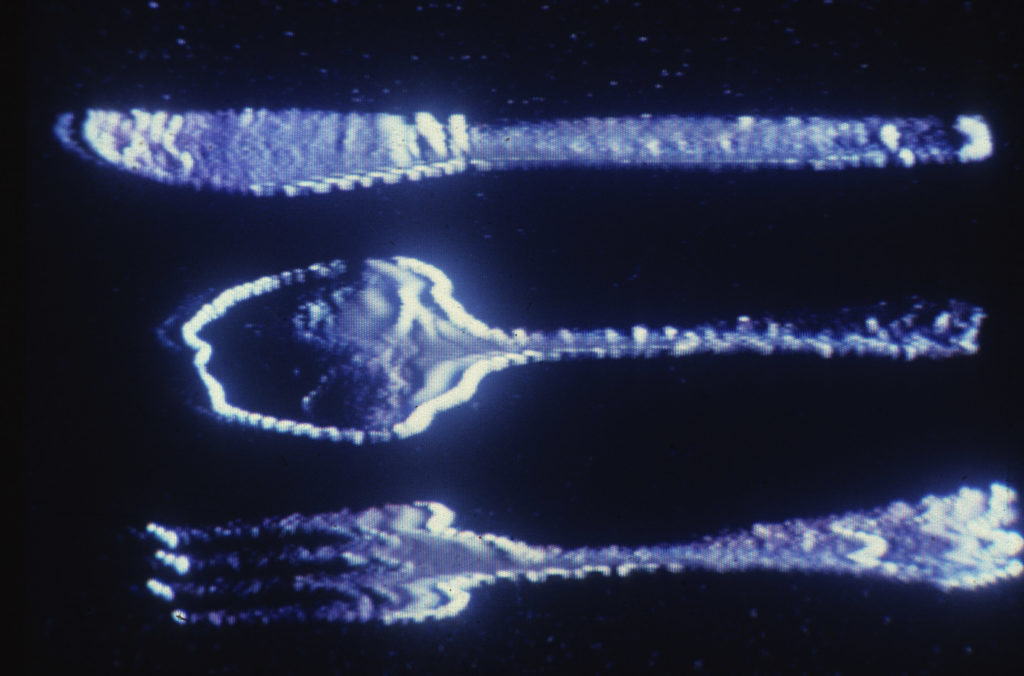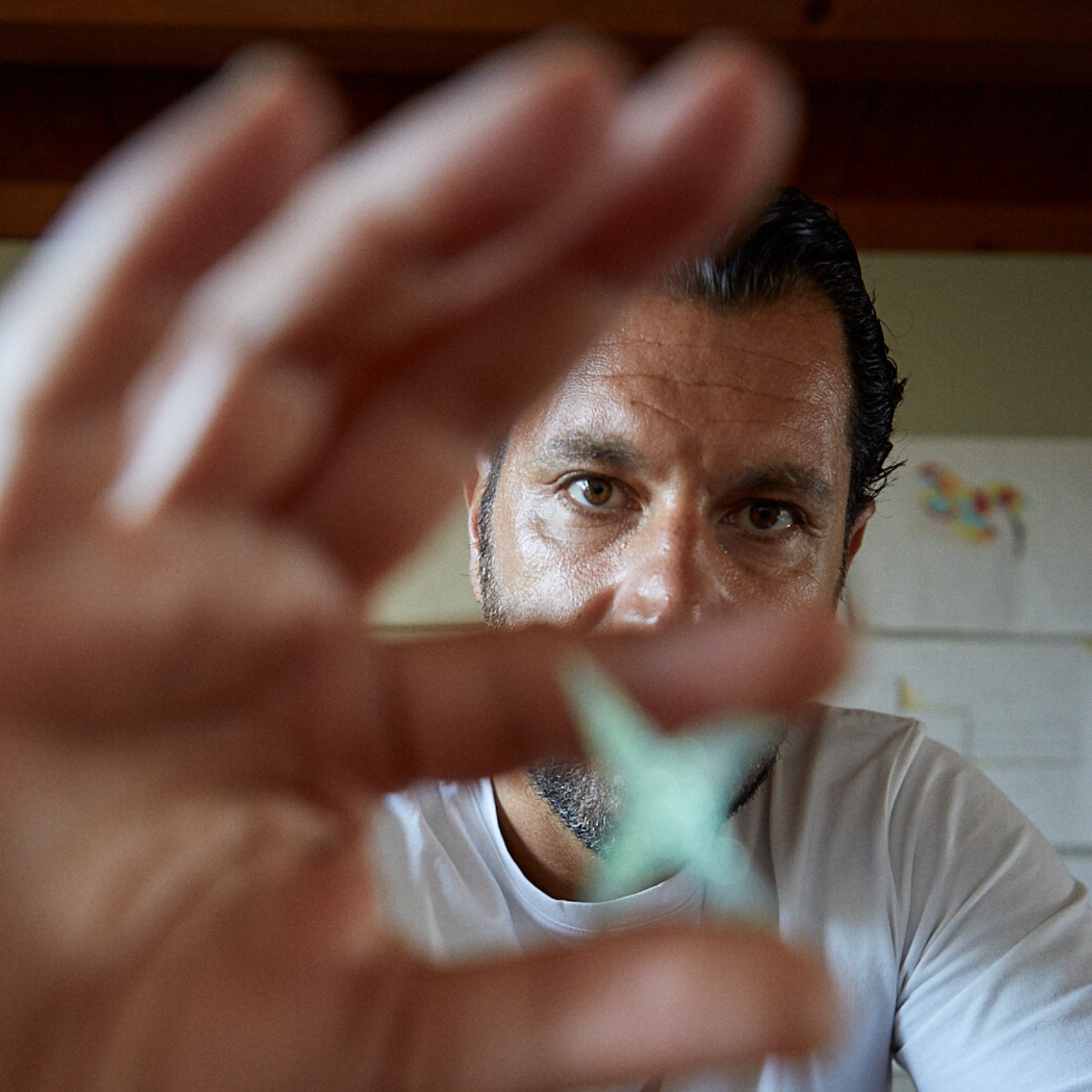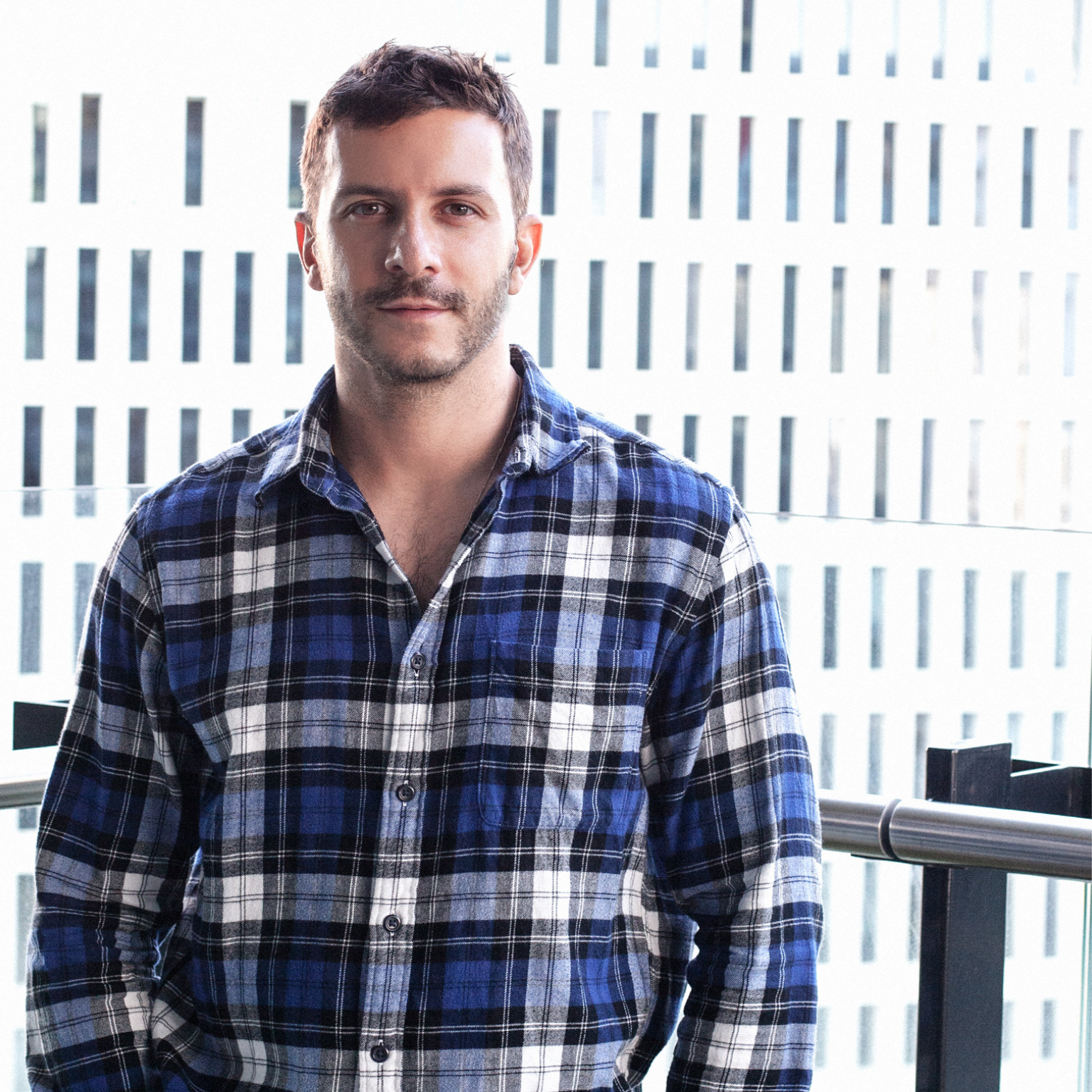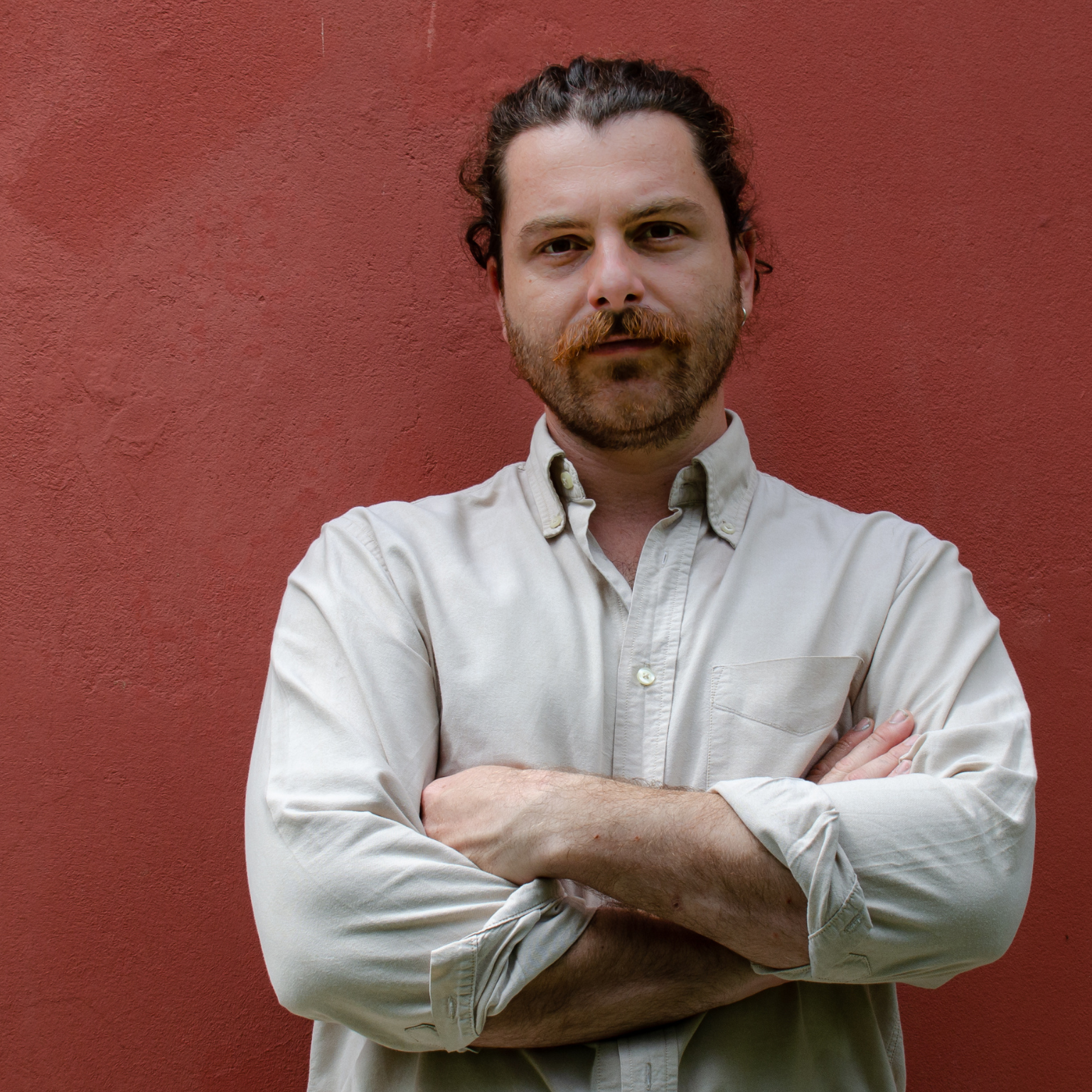Thomas Lisle, artist from the United Kingdom. Photo © Courtesy of the artist
1.Tell us what you do and your beginnings.
I am an artist who is working in digital animation and painting. I have been interested in electronic and digital images from the age of about 18, which is over 40 years ago. In the late 1970s, I got caught up in the punk movement. It was great fun, but by the time I started an art school, I just wanted to focus on painting (I’m tone-deaf and musically incompetent too), but I had taken with me some of the ideas of the period about shaking up artistic activities and incorporating the technology of the time. In those days, we constantly had to tune our televisions to get the best picture.
When I was doing this, I had this idea, from looking at the distortions on the screen, that this was a type of abstraction was ‘New’ and of the age. For many years, I thought I had invented this, but I think a guy in the US started film TV screens before me. Glitch had all sorts of possibilities for artistic expression. I didn’t even know there were such things as edit suites and video FX at that time. Over the years, I developed my glitch practice to make a wide range of painterly contemporary images, which I developed into a series of installations.
By the time I had left university, I started to explore the possibilities of TV graphics, and I soon realised that there was a lot that could be done with technology. Still, this technology was not really making something or images that were the original or really anything to do with contemporary art painting practice. These technologies did not and were not orientated towards the world of art; they are effects developed for graphics to be used by lots of people, they are not original. Around the early 1990s, I decided to stop making what today would be called glitch art.

It seemed that it really wasn’t offering me the degree of control that I wanted, and I could see that the digital possibilities for image manipulation would have a huge impact on the world of art. So I set out to learn about digital video and soon discovered 3D animation and 3D simulation. I was really impressed that the world is time-based and three-dimensional, and I should focus my artwork on these aspects.
It has been a long journey, and people’s interest in digital art is only just awakening. The central precepts of my glitch art were that it was original, and it was meant to be art. I find in today’s world of digital arts that it’s very easy to use a filter or technique that somebody else has made or programmed and apply it to an image or an object, and to me, it’s not so original. Today I spend a great deal of time learning the new visual programming techniques, which basically let you make your own “thang” or thing or effect.
Part of the reason I was interested in digital art was the idea that maybe I could paint in 3D. My digital art of the last 10 years has been focused on those fundamental aspects of art-making that use painting, drawing, mark-making, sculpting, deforming, and abstraction. And the underlying focus of my work has been in trying to find a new kind of abstraction in terms of figurative abstraction and abstract expressionist abstract as well as abstractions that can only be achieved in a 3D environment.

My artistic output breaks down into paintings based on my computer 3D painting experiments in 3D form, combined with experiments in various types of liquid nd gas simulations. And my digital time-based work which uses the same digital experiments, but they are Animated over time. I have been making artists video or time-based media for 40 years, and I have started to realise that a story or narrative is important with timebase media even if it is an abstract or conceptual story. And that when I make a painting, whole different sets of criteria such as colour composition and painting techniques have a much more important role to play than they do in a time-based project.
I started learning the very powerful suite of tools in the software called Maya nearly 20 years ago I had no idea how complicated it is (you can do a degree course in Maya these days) It has 600 different editors ! Maya can make entire future films or the special effects in Hollywood blockbusters. It is not built around just adding a filter to something. It is a complex modular system that links together modelling, character animation, particle systems, fluid and gas sims and hundreds of other things. It has the most complex and sophisticated 3D painting system of any software I know.
2.What does your work aim to say?
The experience and understanding of life and the possibilities of the future. I love nature, equality, freedoms, and seeing terrible wrongs righted. And of course, there are many terrible injustices, inequalities, and crimes against the environment, communities, and races. The sooner we all realise We are all equal – living in a small bubble of delicate nature where we need to share and accept each other, the better we will all be. I’m interested in colours and forms. In human originality and about the inner world, you could call it hidden human nature.
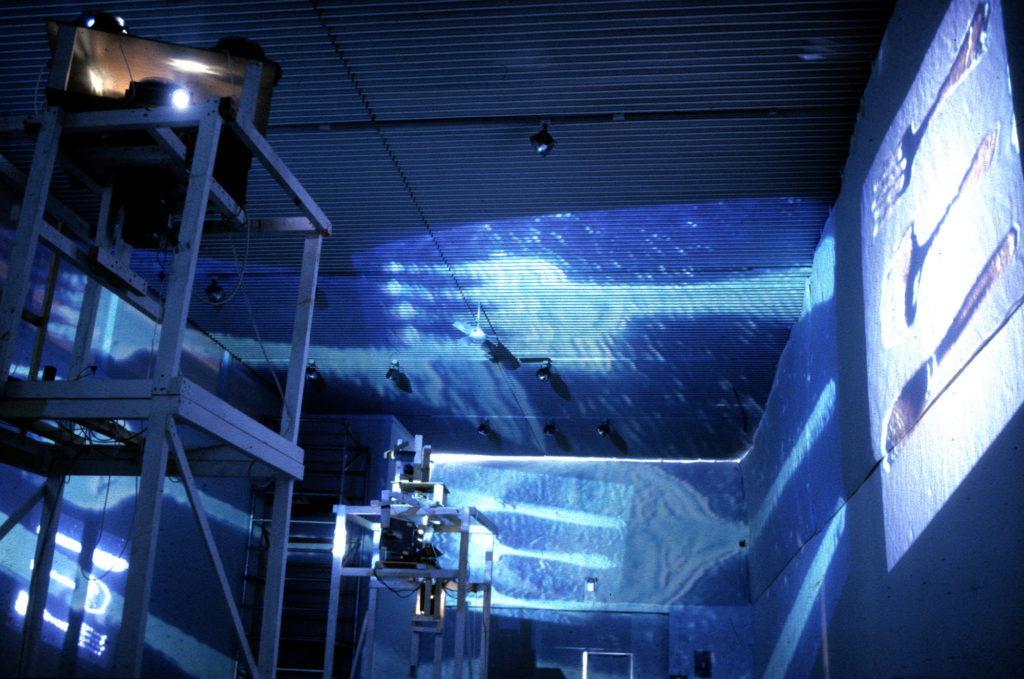
The more you look into yourself your psychology, the bigger and more complex it gets. The more you can see how much it affects us, colours our perceptions of the world and ourselves, and start to be aware of our misconceptions, hidden conditioning, etc. I have always been interested in philosophy, the environment, psychology and how painting will evolve as technology evolves. When I was at school, I took A-levels in biology and geography as I’ve always loved nature, and I was deeply struck even at the age of 18 at how nature was being destroyed unbalanced and how fragile it is and that it is global.
It’s not just happening somewhere else. I started having an interest in Eastern philosophies at a very early age, in fact, I’m much more interested in eastern philosophy than western, maybe because western philosophy is so uninterested in Eastern. Eastern philosophy is not really taught in the West in Universities nor really understood very well in general. It seems to me western philosophy has come to become something to do with scientific thinking and scientific reason, whereas Eastern philosophy it’s more about personal development, intuition, balance and psychology.
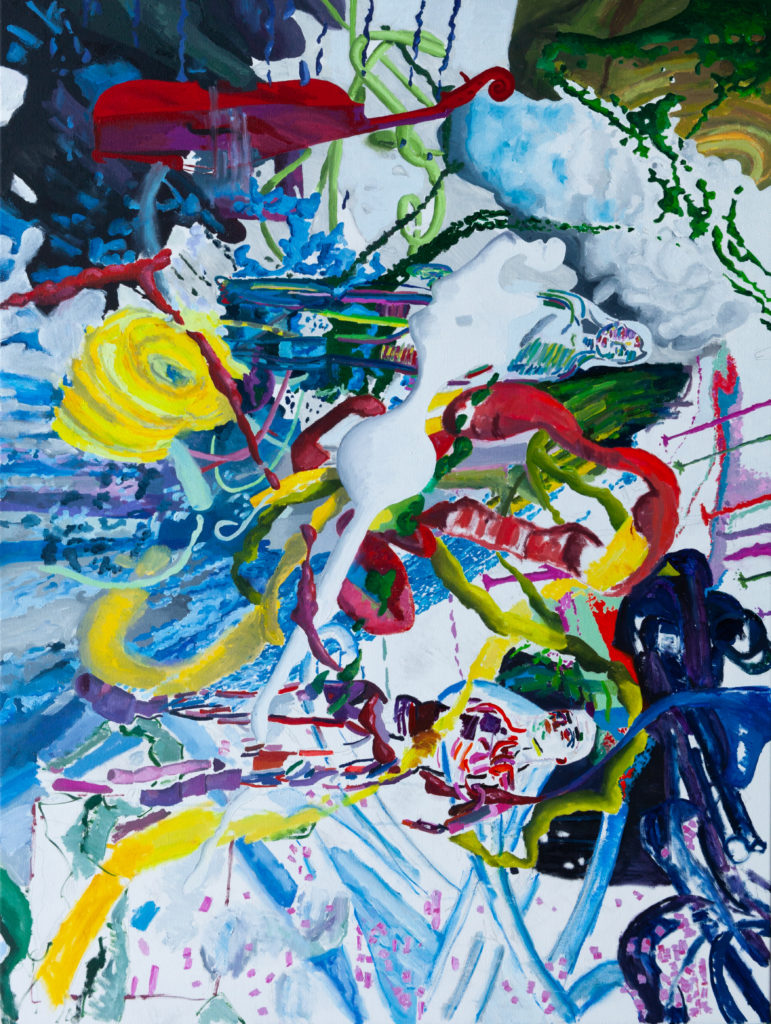
3.Where do you find inspiration for your art?
I have found a great deal of inspiration in psychology and eastern philosophy. I have taken concepts from psychology as a theme for many artworks. I think there is a great deal of synergy between psychology arts and society, politics, thinking in general, and it’s also a really good way for me to understand the subjects better. I’m also inspired by great paintings of the past and what can be achieved with the technology of today.
Computers do you allow us to do things that were just impossible a few years ago as artists but I think it’s important to remember the fundamentals of arts, fundamentals of composition, of abstraction of drawing, and forgetting it or rewriting it, as long as you end up with something better! It would be like throwing the baby out with the bathwater to forget the fantastic heritage of the art world, never existed, we need the past to compare with future.

Pototemising, 1992
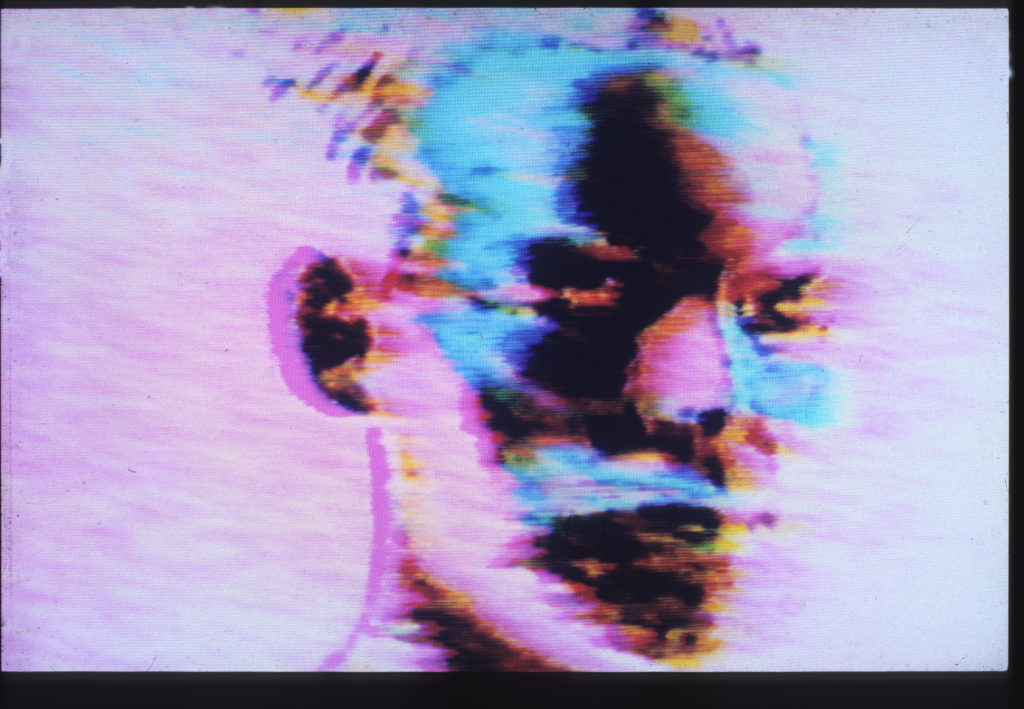
Pototemizing, 1984

A Walk in the Garden. History of Art Lecture Theatre University of Reading, 1984
And I’m inspired as I work as many times I start a piece with an ambitious subject and find that turning it into a painting or image of animation which has the visual strength, dynamism and form to make a painting really work is difficult when it does work that’s inspiring only comes about through hard work.
I’ve been studying digital 3-D animation visualisation modelling simulations and a whole raft of other technologies that make up the technical possibilities of working in 3-D and it’s a huge learning curve, and there’s no simple answers for how digital art should be I certainly don’t think I have found the perfect expression or technique. This is made more complex because time-based animations and still paintings need very different approaches. I’m constantly inspired by thinking that I might be getting closer or better with my next experiments.
4.Could you give us some insight into your creative process?
This is a difficult question as I don’t have a prescribed methodology. When I’m working towards a painting, I start my painting directly in 3D, then add models I’ve made and 3d Simulations of liquids I’ve been experimenting with into a 3D scene. Because all my elements are in 3-D, I can move them all around very quickly to get some idea of how it might all look. And then I find I’ve made something very conventional, to me anyway. So I mess it all up, turn it sideways, move the camera to a position I’ve never thought of before, rescale all the elements, recolour them, and change the lighting until I’ve got something a little more interesting.
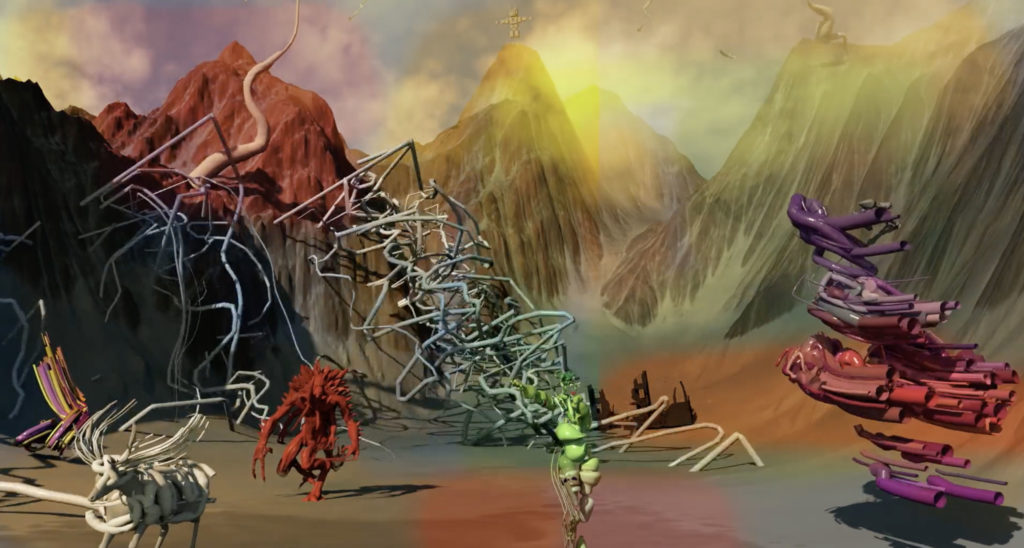
Then I print it out, stick it on my wall, and think about it for a bit. I’m generally not really happy with it at this point; sometimes I am, though. I’m gonna leave it for a week or so to think about it let it sink in. And I go back again work on it some more when I feel I’ve got something I’m happy with. Then I start to turn it into a painting and there you can change even more drastically.
With an animation, I have to spend six months or so on one, I start off with what seems a very clear idea as I soon realise it’s not really adequate at all. Or even that I’m not ready to address the problems and issues I really want to address or that I am being too obscure. Or that my story/narrative doesn’t make sense as I do like to make abstract stories rather than stories that make sense if that makes sense.

Displaced Reduced Form Head. 2017 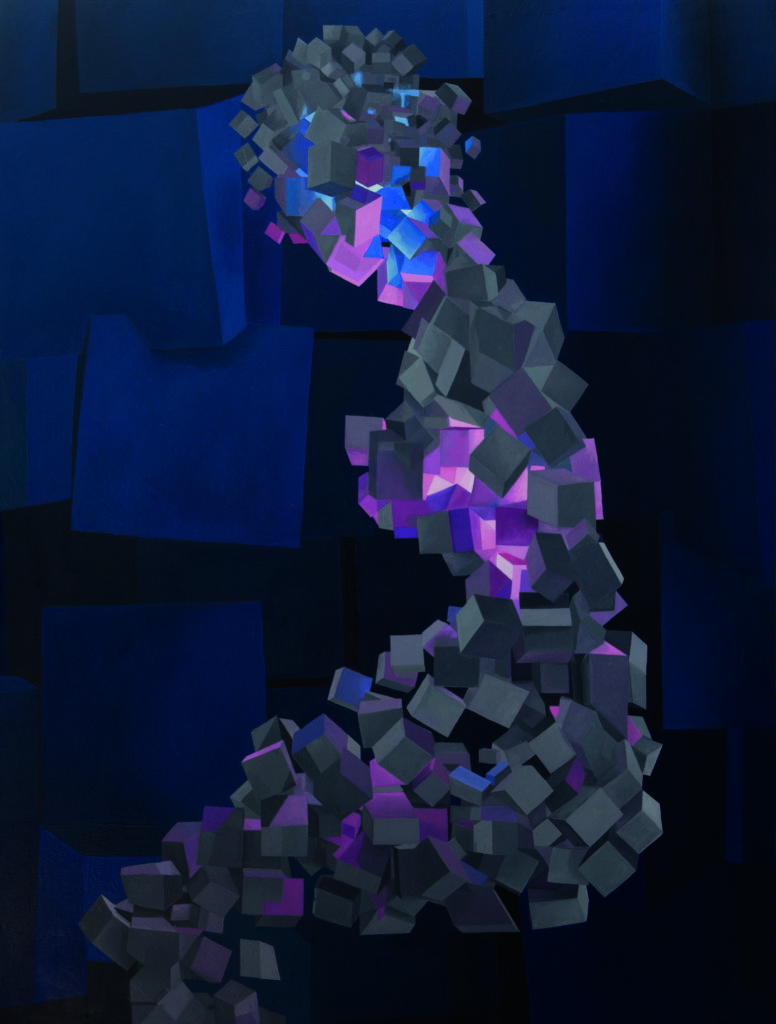
Material and Non Material Contemplative Figure, 2017
As I feel that abstraction is a fundamental aspect of art as it is of music, so I find I make several scenes of animation, and then I remake them, and then I make some more, and I change the script and I change the storyboard until I feel that it’s hitting the right notes that I’m aiming for. I And I know that my work can be ambiguous or obscure, but hopefully, with a little bit of thought, it’s not really too difficult to understand hopefully.
5.What are your future projects?
I’m just in the process of making a series of paintings where I’m trying to focus on both abstract figurative work in a sort of abstract expressionist setting, and I’m happy with the work. The theme of the work is the inner world, the world of the mind i’m not saying if it’s mine or not. I’m quite happy thinking in terms of archetypes. I suspect there is an element of the personal and collective consciousness in these works.
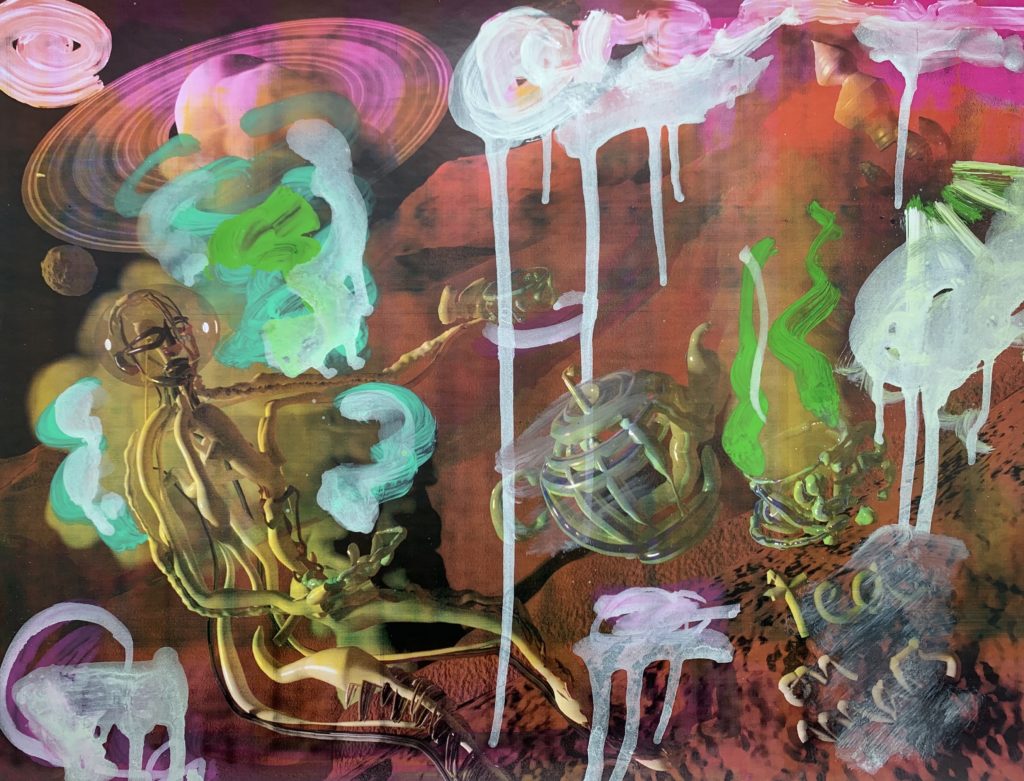
Tea on Mars, 2021 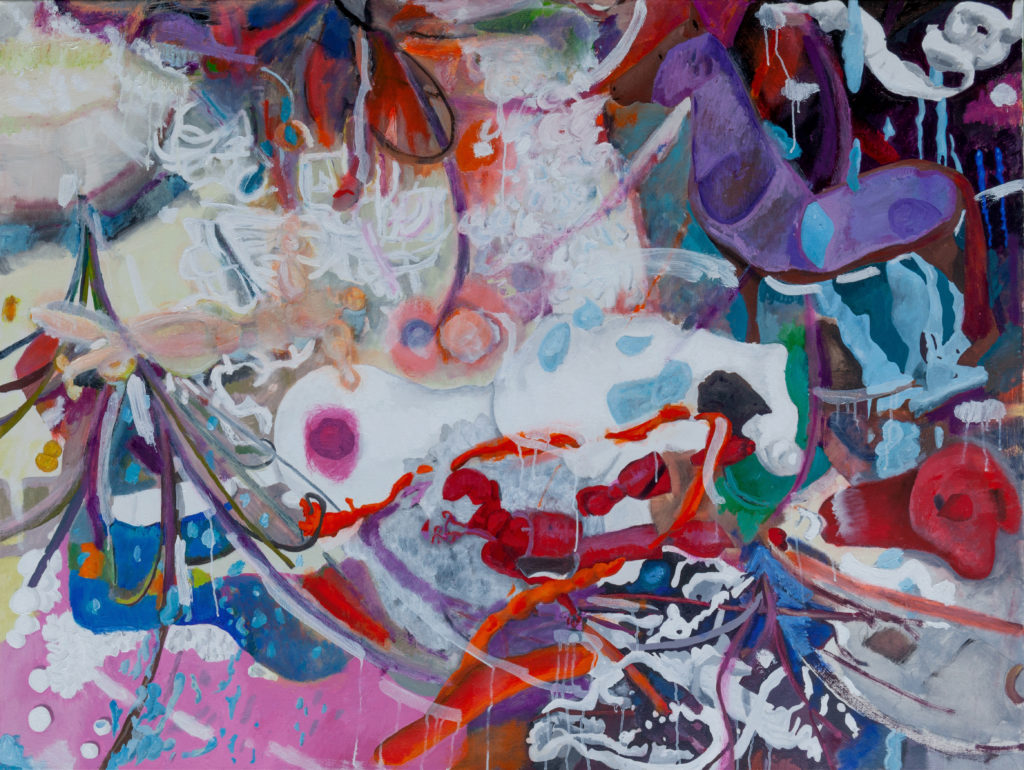
Half a Horse, 2022
The subconscious has its own language, its in symbols and images, its easily confusing. Jung “Man and his symbols” 1964 I’m also in the process of starting a new animation, and I’m just ruffing out the storyboard. I want this piece to be about the journey or in psychological terms, what is called “individuation”, and I want to treat it in an abstract way.
I’ve only just started, but it seems to me that as we go through life, we are on a journey of self-discovery; this is nothing new! But it will look at where we are going today collectively, which is new territory, especially after the invasion of Ukraine, where art is going, where I am going, where the planet is going. It’s not fully realised, I have about 10 different subjects I want to make it about, which makes life complex.
Interview by Fabio Pariante, journalist / Twitter – Instagram
MORE
Thomas Lisle on social networks: Instagram – LinkedIn – Vimeo – Website
Thomas Lisle is a British artist and since 1983 his production has been based on the creation of 3D digital animations, painting, digital images and installations. Lisle studied at the Jacob Kramer College of Art in Leeds, then at the University of Reading (Department of Fine Arts) and since the mid-1980s, his work has been featured in exhibitions and screenings in the UK and internationally. The inspiration for each of his works comes from psychology, science fiction and the environment.
Lisle was among the first artists in the 1980s and 1990s to present works on video glitches, the most important being Fish out of Water, I, Claudius and Portrait of a Francois funded by the Arts Council. He then projected the same images from Glitch TV through moving projectors. His works are kept in the Tate Modern and the Museum of Modern Art in New York and he has participated in many festivals including File Brazil, Matadac Spain, Pixel Fest Moscow, Lumen Prize, Leeds City Hall, The Psychedelic Film and Music NY Festival. Thomas Lisle lives and works in London.
